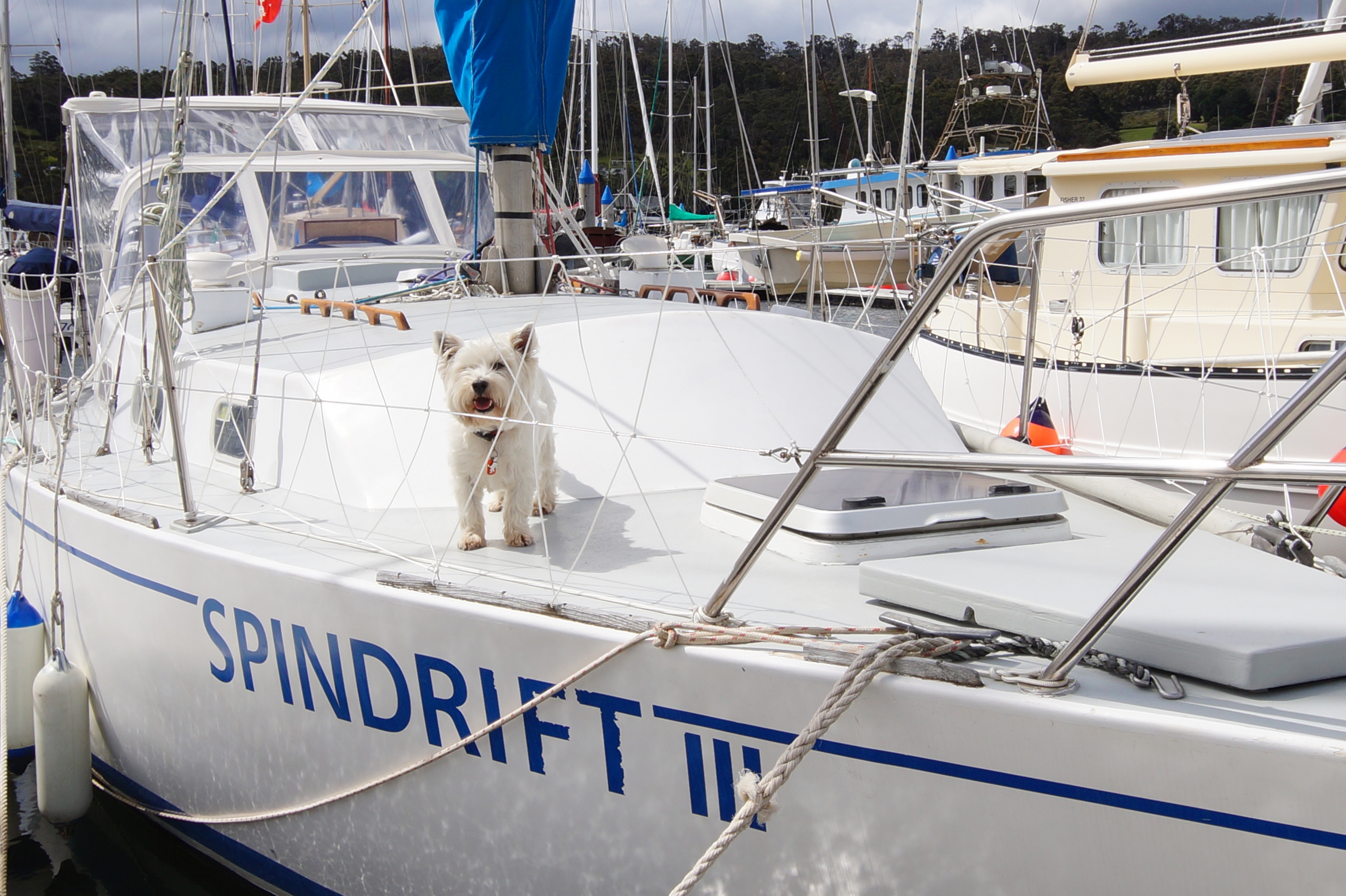
Pets afloat – take them or leave them behind?
However much we love our pets, there is still much to consider before taking them cruising. How long will you be gone? Will the pet miss you, or settle easily with someone else? Some animals adapt happily to life afloat, while others hate it, or are simply unsuitable due to temperament or size. Traditionally cats and small dogs have made the best furry shipmates, but there is a surprising array of pets and their owners happily sharing the confines of a boat.
While a few trial runs will help answer the question of whether to take Fluff or Fido sailing, some animals are clearly unsuitable. Large dogs, elderly, unwell or extremely active pets may fare better on terra firma.
If you decide to include pets in your cruising plans these tips might help make the experience more enjoyable for all concerned:
- Change the collar tag for one with boat name and mobile phone number(s), along with the pet’s name. A local council tag is no help if your pet goes astray while cruising.
- Their normal walking harness is perfect as a safety harness
- Consider how to retrieve them if they go overboard. We keep a large landing net handy in case we need to scoop up our small dogs; larger dogs can wear a harness or lifejacket with a handle on top that can be grabbed with a boat hook. Cats can also be provided with a means of climbing back aboard at anchor.
- Carry current photos of your pet, in case it goes missing.
- Introduce them to the boat gradually. Like humans, a frightening experience can spook them. Some pets take time to accept the strange motion and noises.
- A supply of ‘dog towels’ is handy to dry them and remove most of the sand before they come aboard from the beach. This helps to avoid the dreaded wet animal smell.
- Getting them to ‘go’ on board. Cats are delightfully easy, especially if already trained to use a litter box. Dogs can be taught to use a carpet square or piece of artificial turf, but I’ve not had any luck with this. The idea is to impregnate the material with the smell of the animal’s urine, and then to wash it overboard after use. I prefer to work with a dog’s natural instinct to void as far as possible from home, and train them to use the bow area. A bucket of seawater will take care of liquids, while the solids can be picked up with a tissue and disposed of.
- Unfortunately, some dogs would rather hold on for over 24 hours than soil their living space. It is kinder to take them ashore a couple of times a day than make them endure on board. This might restrict your cruising plans, and may need to be considered when making the initial decision whether to take them along. However, dogs need daily exercise, so if this is an issue your cruising style may be canine incompatible.
- Anyone planning to cruise overseas should consult DAFF for the current laws regarding pet importation. Sandy Wise has written an excellent article about her own experience with this.
By: Petrea McCarthy